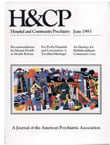Family Involvement in Residential Treatment of Children With Psychiatric Disorder and Mental Retardation
Abstract
Objective: The goals of the study were to determine the extent of family involvement with children in residential treatment settings, to examine whether involvement diminishes over time, and to examine the relationship between involvement and the child's diagnosis as well as the demographic characteristics of the child and the family. Methods: Staff rated the level and frequency of family involvement with 234 children, aged five to 19 years, living in three residential treatment centers. The children were grouped according to three diagnostic categories: psychiatric disorder, mental retardation, and dual diagnosis of psychiatric disorder and mental retardation. Result :Almost one-third of the children had no family contact, and about 5Opercent had three or fewer contacts per year. The level of family involvement was lower with dually diagnosed children than with children who had only psychiatric disorder or mental retardation. Level of involvement was also related to the driving time between the family home and the residential facility and to socioeconomic status, variables that seemed to account for the lower level of involvement of families with dually diagnosed children. Conclusions: Greater distance between the family home and the residential treatment center and low socioeconomic status greatly limit a family's accessibility for involvement with children in out-of-home placements. These obstacles are more likely to occur in families of dually diagnosed children.
Access content
To read the fulltext, please use one of the options below to sign in or purchase access.- Personal login
- Institutional Login
- Sign in via OpenAthens
- Register for access
-
Please login/register if you wish to pair your device and check access availability.
Not a subscriber?
PsychiatryOnline subscription options offer access to the DSM-5 library, books, journals, CME, and patient resources. This all-in-one virtual library provides psychiatrists and mental health professionals with key resources for diagnosis, treatment, research, and professional development.
Need more help? PsychiatryOnline Customer Service may be reached by emailing [email protected] or by calling 800-368-5777 (in the U.S.) or 703-907-7322 (outside the U.S.).



